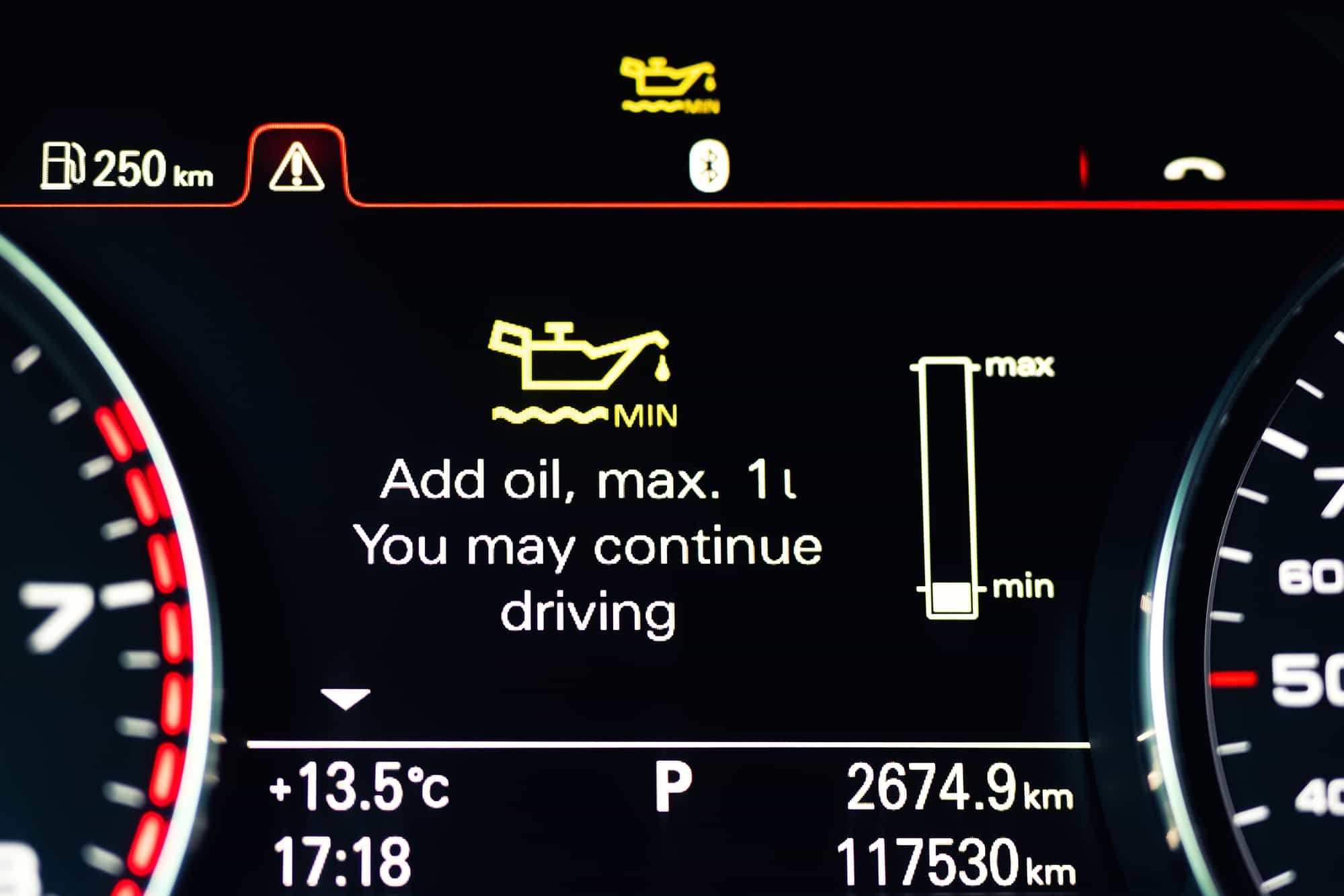The most common symptom of a bad oil pump is a low oil pressure warning light on the dashboard. This warning light will typically come on when the oil pressure drops below a certain level, indicating that there is a problem with the oil pump. Other symptoms of a bad oil pump include increased engine noise, decreased oil pressure, and engine overheating.
It is important to pay attention to these symptoms and take action as soon as possible. Ignoring these symptoms can lead to serious engine damage and costly repairs.
How Can You Tell If Your Oil Pump Is Bad? (6 Common Symptoms)
The oil pump is one of the most important components of your vehicle’s engine. When an oil pump fails, it can cause serious damage to the engine, so it’s important to be able to recognize the signs of a bad oil pump.
The symptoms of a bad oil pump include low oil pressure, engine noise, poor engine performance, burning smell, and oil leaks. Low oil pressure can be indicated by a warning light on the dashboard or a fluctuating oil pressure gauge.
Engine noise can include ticking or knocking sounds, and poor engine performance can include reduced power or acceleration. A burning smell can be caused by oil leaking onto hot engine components, and oil leaks can be visible as puddles or stains under the car.
These symptoms can also be caused by a variety of issues such as a clogged oil filter, or using the wrong specification engine oil. So it is important to diagnose and fix the issue promptly to prevent further engine damage.
Here are six of the top symptoms to look out for.
Symptom 1. Low Oil Pressure
One of the most common symptoms of a bad oil pump is low oil pressure. Low oil pressure is a common symptom of a bad oil pump because the oil pump is responsible for circulating oil through the engine to lubricate the moving parts.
If the oil pump is not functioning properly, it may not be able to circulate enough oil through the engine, resulting in decreased oil pressure.
Low oil pressure can be indicated by a warning light on the dashboard or a fluctuating oil pressure gauge. It can also cause engine noise, poor engine performance, and oil leaks, which can be caused by increased friction and wear due to inadequate lubrication.
Symptom 2. Loud Engine Noises
Another symptom of a bad oil pump is loud engine noises. If you hear knocking or ticking sounds coming from your engine, it could be a sign that the oil pump is not providing enough oil to lubricate the engine’s moving parts.
Engine noises can be a symptom of a bad oil pump because the oil pump is responsible for circulating oil through the engine to lubricate the moving parts. If the oil pump is not functioning properly, it may not be able to circulate enough oil through the engine, resulting in increased friction and wear on the moving parts.
This can cause metal-to-metal contact between the parts, resulting in unusual noises such as ticking, knocking, or grinding sounds. Low oil pressure due to a bad oil pump can also cause engine noise by reducing the effectiveness of the oil in dampening the noise of the moving parts.
Symptom 3. Poor Engine Performance
A bad oil pump can also cause poor engine performance. If your engine is struggling to accelerate or seems to lack power, it could be due to insufficient oil pressure or poor lubrication.
Poor engine performance can be a symptom of a bad oil pump because a failing oil pump won’t move the oil around the engine as efficiently as it should resulting in increased wear and tear. This can cause reduced power, acceleration, and overall engine performance.
Low oil pressure due to a bad oil pump can also cause poor engine performance by reducing the effectiveness of the oil in cooling the engine. High temperatures can cause the engine to detonate or knock, which can damage the engine and reduce its power output.
It can also cause the engine to run less efficiently by increasing the resistance to airflow and reducing the amount of oxygen available for combustion. This can cause reduced power and acceleration, as well as increased fuel consumption
Symptom 4. Increased Engine Temperature
Low oil pressure can also cause increased engine temperature. A bad oil pump can increase engine temperature because the oil pump is no longer pumping enough oil to sufficiently lubricate the moving parts and cool the engine.
This can lead to increased friction and wear on the moving parts and can cause increased heat production, which can lead to higher engine temperatures.
Low oil pressure due to a bad oil pump can cause the oil to break down more quickly, reducing its effectiveness in cooling the engine. This can cause the engine to overheat if the heat is not dissipated properly.
Symptom 5. Check Engine Light On
If the check engine light comes on, it could be due to a failing oil pump. A decrease in oil pressure can trigger the oil pressure sensor to send a signal to the engine control module (ECM) that the oil pressure is low, which can cause the check engine light to appear on the dashboard.
A bad oil pump can also cause other engine issues that can trigger a check engine light, such as engine misfires or reduced engine performance.
Symptom 6. Oil Leaks
If you notice oil leaks under your vehicle or on your engine, it could be a sign of a failing oil pump. Low oil pressure can cause oil to leak from the engine’s seals and gaskets because of damage caused by insufficient oil, leading to oil stains on the ground or engine bay.
If the oil pump o-ring is damaged, it can also cause oil to leak from the engine. The oil pump o-ring is a seal that helps to prevent oil from leaking out of the oil pump. If the o-ring is damaged, it can allow oil to leak out of the oil pump, which can be visible as puddles or stains under the car. Additionally, a damaged oil pump o-ring can cause decreased oil pressure, which can lead to engine damage and reduced engine performance.
Why Do Engine Oil Pumps Go Bad?
Oil pumps can go bad for several reasons, including:
- Wear and tear: Over time, the components of the oil pump can wear down from regular use, causing it to lose efficiency and eventually fail. Worn-out parts can include the pump’s gears, bearings, or seals.
- Lack of maintenance: If the oil in the engine is not changed regularly, it can become dirty and contaminated, which can cause damage to the oil pump and other engine components.
- Contaminants in the oil: Dirt, debris, and other contaminants can enter the engine oil and cause damage to the oil pump. Contaminated oil can cause the pump’s gears to wear down faster than usual, leading to decreased oil pressure and potential engine damage. Oil contamination can also cause the oil filter to become clogged, further exacerbating the problem.
- Manufacturing defects: In rare cases, oil pumps can have manufacturing defects that cause them to fail prematurely.
- Overheating: If the engine overheats, it can cause damage to the oil pump and other engine components, leading to failure.
- Clogged Oil Filter: If the oil filter becomes clogged, it can prevent oil from flowing properly through the engine. This can cause the oil pump to work harder than it should, leading to premature wear and tear. A clogged oil filter can also cause the oil pressure to drop, which can result in engine damage.
What Next – How To Diagnose And Fix A Bad Oil Pump
To diagnose a bad oil pump, you should check the oil pressure, the oil pressure warning light, listen for unusual engine noises, inspect for oil leaks, and inspect the oil pump itself.
However, some symptoms of a bad oil pump can also be caused by other engine issues, so it is important to diagnose the issue correctly to prevent further engine damage. Seeking the assistance of a professional mechanic may be necessary if you want to carry out an oil pressure test or replace the pump entirely.
1. Oil Pressure Test
One of the most effective ways to diagnose a bad oil pump is by performing an oil pressure test. This test involves using a pressure gauge to measure the oil pressure in the engine. The engine needs a certain amount of oil pressure to function properly, and if the pressure is too low, it could be a sign of a faulty oil pump.
To perform an oil pressure test, you will need to remove the oil pressure sending unit and install a pressure gauge in its place. Then start the engine and let it idle while measuring the oil pressure. If the pressure is too low, it could be an indication of a bad oil pump.
2. Visual Inspection
Another way to diagnose a bad oil pump is through a visual inspection. During this inspection, you will look for any signs of damage or wear on the oil pump. You should also check for any leaks or blockages in the oil passages.
If the oil pump is damaged or worn, it may need to be replaced. Additionally, if there are any blockages or leaks in the oil passages, they will need to be repaired.
3. Oil Analysis
Oil analysis is another method that can be used to diagnose a bad oil pump. This involves taking a sample of the engine oil and sending it to a laboratory for analysis. The lab will test the oil for any contaminants or metal particles that could indicate a problem with the oil pump or other engine components.
If the oil analysis reveals any issues with the oil pump, you will need to further inspect the pump and determine the best course of action.
4. Replacing A Bad Oil Pump
Fixing a bad oil pump requires replacing the pump itself. This is a complex procedure that involves disassembling the engine and can be difficult and expensive.
Here are a few steps that a mechanic might take to fix a bad oil pump:
- First, the mechanic will drain the engine oil and remove the oil pan to access the oil pump.
- Next, the old oil pump will be removed and a new one will be installed.
- The mechanic will also inspect the oil pickup tube and screen for any signs of damage or wear, and replace them if necessary.
- Once the new oil pump is installed, the mechanic will reassemble the engine and refill it with fresh oil.
- The mechanic will then start the engine and check the oil pressure to ensure that the new pump is working properly.
It is important to note that fixing a bad oil pump is not really a DIY job and attempting to fix a bad oil pump on your own can lead to further damage to your engine if you do it wrong and can be dangerous.
Regular maintenance, such as oil changes and oil filter replacements, can help prolong the life of your oil pump and prevent it from failing prematurely. It is also important to pay attention to any warning signs of a failing oil pump, such as low oil pressure or engine noise, and have your vehicle inspected if you think there is something wrong.







I noticed a tickling sound coming from my engine and the oil pressure warning light is on. Could this mean my oil pump is failing, and if so, what steps should I take immediately?